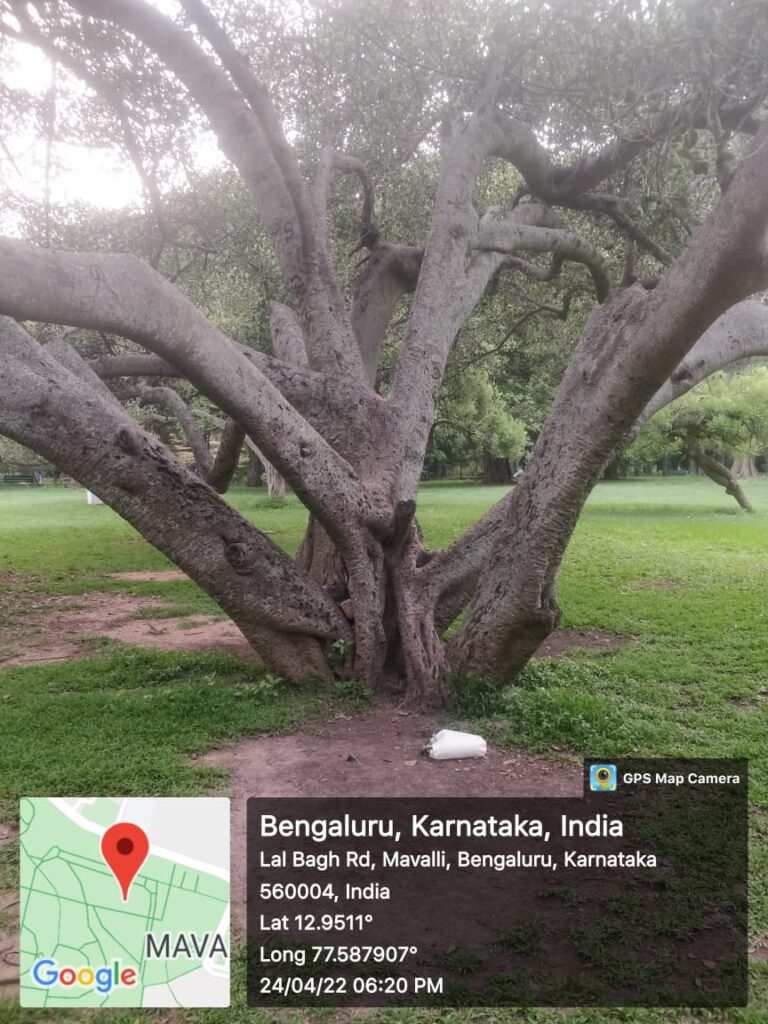The Ficus genus is vast and varied; there are about 850 species of plants in the Ficus genus, ranging from woody trees, shrubs, vines, or epiphytes in the family Moraceae. Approximately 115 species of ficus are present in India, the most popular being the Peepal (Ficus religiosa), the Banyan (Ficus benghalensis), and so many others.
Of the many such figs that stand tall (or rather spread wide) is a particular tree in the Lalbagh Botanical Gardens in Bangalore. Dubbed Ficus krishnae, it is thought to be a banyan tree variation and is often treated as a subspecies. But that was not the case when first classified in the early 1900s as a new species. However, a few decades later, it was marked as a freak variant of the common banyan tree and was named a sub-species: Ficus benghalensis var. krishnae.

More recently, based on genetic research, the tree has been re-designated as an independent species in its own right.
But apart from all the taxonomic details, here are some reasons why this tree is truly special. The tree is a native of India and is quite rare. While there are many similarities to the banyan, namely the spreading branches with aerial roots that thicken and become trunks that support the crown. Or the similarity in the texture of the leaves, which look a lot similar.
Yet, the differences persist. This tree does not display a dense and spreading canopy like a banyan, and the bark also feels quite different. But the most significant difference is the way the leaves are shaped; they seem to have a single jarlike funnel. The basil loves of the leaves that spring from the stem twist backwards to form a “cup”.
According to legends, the name Krishna comes from Lord Krishna, who rolled up the leaves of an ordinary banyan tree so that he could hide his butter in it. Thus it is also known as Makhan Katori/ माखन कटोरी or Krishna’s buttercup, Krishna vad/ कृष्ण वद.

As mentioned in Vijay Thiruvady’s book Heritage Trees, this particular tree is around 150 years old. Thus when the tree came into being, India was under colonial command, and Queen Victoria was the empress. There is also an interesting story on the discovery of the species narrated by Vijay in an episode on Bangalore Walks.
You can catch the tree near the Japanese Garden, a short walk from the Lalbagh main gate. The best part is that the park guards are pretty stern and dissuade many visitors from sitting on the branches with a persistent and irritating whistle.
A few metres away, almost 100 metres, is another younger Ficus krishnae tree. It has even a further variation to its cup-like leaves; the pocket is divided into two compartments with a stitch in the middle. It is incredible to have such rare trees living out in close cohabitation.
So, next time you are in the park, don’t forget to visit the fantastic Ficus krishnae tree and its younger brother (or sister). Here are the coordinates for the same.
